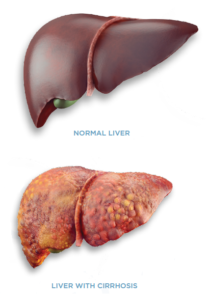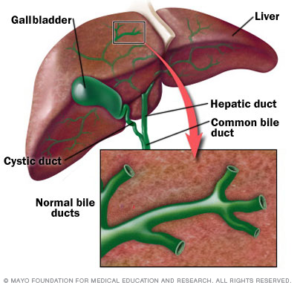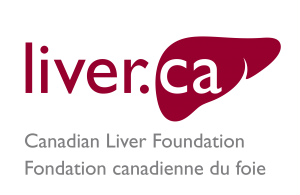Alagille Syndrome
Alagille Syndrome
Alagille syndrome is an inherited disorder that mimics other forms of prolonged liver disease seen in infants and young children. However, a group of unusual features in other organ systems distinguishes Alagille syndrome from other liver and bile duct diseases in infants. Specifically, Alagille syndrome is also associated with cardiac disease, eye and skeletal findings and a characteristic facial appearance. The blood vessels and kidneys may also be involved in a smaller proportion of cases.
Children with Alagille syndrome usually have a liver disease characterized by a progressive loss of the bile ducts within the liver over the first year of life.
This leads to a buildup of bile in the liver, causing damage to liver cells. Scarring may occur and lead to cirrhosis in about 30 to 50 per cent of affected children.
Causes
Alagille syndrome is caused by changes, or mutations, in one of two genes, usually JAGGED1 or occasionally NOTCH2. In approximately 60 per cent of the cases of Alagille syndrome, the gene change is the result of a new mutation that occurs in that baby. In other 40 per cent of cases, the gene mutation is inherited from one of the parents. A parent carrying a disease-causing mutation has a 50 per cent chance of transmitting that gene to any subsequent children. Each affected adult or child may have all or only a few of the features of the syndrome. Even individuals in the same family, sharing the same gene mutation have variable manifestations in each of the affected organ systems.
Symptoms and Physical Characteristics

Not all individuals with Alagille syndrome have significant liver disease, though probably the majority do. Typically, symptoms of the illness are jaundice and poor growth within the first three months of life. Later, there is persistent jaundice, severe itching, fatty deposits in the skin (xanthomas) and poor growth during early childhood. Frequently the disease stabilizes between ages five and eight with an improvement in symptoms.
Other features which help establish the diagnosis include abnormalities in the cardiovascular system, the spinal bones, the eye and the kidneys. Heart involvement typically involves narrowing of the blood vessel connecting the heart to the lungs (pulmonary artery) which ranges in severity, but may also include a simple heart murmur or a severe congenital heart problem. The shape of the bones of the spinal column may often look like the wings of a butterfly on x-ray, but this does not cause any problems. There is also a specific facial appearance shared by children with Alagille syndrome that makes them easily recognizable. The features include a prominent, broad forehead, deep-set eyes, a straight nose and a small pointed chin.
The majority of children with Alagille syndrome have an abnormality of the eyes in which an extra, circular line on the surface of the eye can be detected by a specialized eye examination. However, it does not lead to any vision problems.
In addition, some children have various abnormalities in their kidneys. In approximately 15 per cent of individuals with Alagille syndrome there is a risk of bleeding in the head and brain (stroke).
Diagnosis
Although Alagille syndrome was first described in the medical literature in 1969 by Dr. Daniel Alagille, it is now becoming recognized more frequently among children with chronic forms of liver disease. Diagnosis can be established by microscopic examination of liver biopsy specimens, a stethoscope examination of the child’s heart and chest, a special eye examination (slit-lamp exam), an x-ray of the spinal column and an ultrasound examination of the abdomen. Genetic testing can also be performed to confirm unusual or mild cases.
Treatment
Treatment of Alagille syndrome is primarily medical and not surgical and is based on trying to increase the flow of bile from the liver, maintain normal growth and development, and prevent or correct any of the specific nutritional deficiencies that often develop. Because bile flow from the liver to the intestine is slow in Alagille syndrome, medications designed to increase the flow of bile are frequently prescribed. This may decrease the damage in the liver and improve the digestion of fat and fat soluble vitamins.
Itching caused by the buildup of bile in the blood and skin may be relieved by medications (e.g. ursodeoxycholic acid, cholestyramine). Elevations in blood cholesterol also respond to the medications used to increase bile flow. Elevated blood cholesterol levels can lead to small yellow deposits of cholesterol on the skin of knees, elbows, palms, eyelids and other surfaces that are frequently rubbed (xanthomas).

Although reduced flow of bile into the intestine leads to poor digestion of dietary fat, a specific type of fat can still be well digested and therefore infant formulas containing high levels of medium-chain triglycerides (MCT) are usually substituted for conventional formulas in infants. Some infants can grow adequately on breast milk if additional MCT oil is given. Foods containing high fat levels may lead to looser, greasy stools later in childhood. However, the benefits from the calories and vitamins in the fat that is absorbed usually leads to the recommendation that the child not be put on a low-fat diet. There are no other dietary restrictions. Occasionally, MCT oil is also prescribed as a nutritional supplement in infancy.
Problems with fat digestion and absorption may lead to a deficiency of fat-soluble vitamins (A, D, E and K). Vitamin A deficiency causes night blindness and red eyes. Vitamin D deficiency causes softening and fractures of the bones and teeth. Vitamin E deficiency causes a disabling disease of the nervous system and muscles, and vitamin K deficiency causes bleeding problems and has been associated with poor bone health as well. Deficiencies of these vitamins can be diagnosed by blood tests and usually can be corrected by vitamin supplements.
There is presently no procedure that can correct the loss of the bile ducts within the liver. In 20 to 30 per cent of patients, liver cirrhosis advances to a stage where the liver fails to perform its functions. Liver transplantation is then considered.
The overall life expectancy for children with Alagille syndrome is unknown, but depends on several factors: the severity of scarring in the liver and/or the need for liver transplantation, the risk of stroke and whether heart or lung problems develop because of the narrowing in the pulmonary artery. Many adults with Alagille syndrome are leading normal lives.
Support
National Help Line:
This support resource gives you and your loved one somewhere to turn for answers after diagnosis, helps you understand your disease, and provides you with the resources you need. You can call 1 (800) 563-5483 Monday to Friday from 9 AM to 5 PM EST.
The Peer Support Network:
This is a national network of people living with liver disease that have offered to share their experiences with others. It was developed by the Canadian Liver Foundation as a means to link Canadians like you who have a family member who has liver disease, who care for someone who suffers from liver disease, or who have been diagnosed with a liver disease, to talk about your concerns with a peer in a similar situation.
If you would like to be connected with a Peer Supporter in your area, or would like to join the Peer Support Network, please fill out the Peer Support Network Sign-up Form.
Help us help you!
If you are not satisfied with the information you just read or any information on our website, please take a moment to send us your comments and suggestions on the type of content you would like to find on liver.ca. Please include the page you are commenting about in the subject line of your email.



